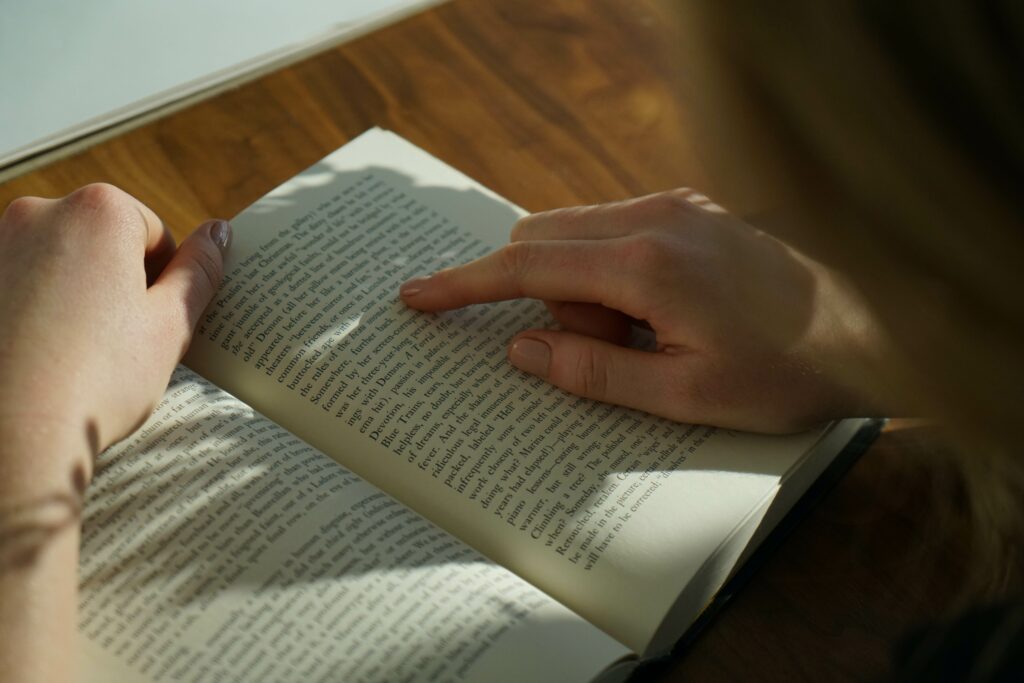3 Easy Tips On How To Read More Books
In this information age, news consumption, especially across social media, is substantial. Throughout the day, you probably spend a lot of time reading online. However, one of the best things you can do for personal growth is – to read books. Below are a few simple suggestions on how to read more books. Up your game and become an everyday reader!
What are the benefits of reading every day?
- Reading improves our communication skills and allows us to learn about things that pique our interest.
- Also, reading is the ultimate relaxation method and stress reliever.
- Reading improves sleep.
- It improves our general knowledge and vocabulary.
- The more you read, the more it will improve your writing skills.
- Reading improves focus, memory, concentration, and analytical thinking skills!
- It exposes you to multiple points of view.
Did you know?
People aged 15–44 in the US spend 10 minutes or less per day reading? But, the good news is, you will probably read more as you age! Time reading increases with age, with those in the 75 and over group averaging 51 minutes.
1) Determine the time when you will read
It goes without saying: if you want to read more books, you need to get into the habit of reading almost daily. One of the things that can help when introducing a new habit, is to do it at the same time.
We suggest you set some time aside during the day and use it for reading. Reading can be part of your morning ritual. You can read during the lunch break, while using public transport, or before going to bed.
You can even set a timer on your phone for a certain amount of time. 15 minutes. 30 minutes. An hour. The only thing that matters is to determine the time for reading, put it in the calendar, and make it happen.
Tip: If you want to help children develop a love of reading, you can suggest a time during the day when you can read with them! Of course, each from his own book. It is a fantastic way to reduce the time they would otherwise spend looking at the screen.
“I have a passion for teaching kids to become readers, to become comfortable with a book, not daunted. Books shouldn’t be daunting, they should be funny, exciting and wonderful; and learning to be a reader gives a terrific advantage.”
– Roald Dahl
2) Make a list of books you will read
Read books related to the things that interest you. This way, you will read it faster and with much more enthusiasm.
Having a TBR list of such books can motivate you even more. Like most people, you will probably want to cross out the finished book from the list as soon as possible and move on to the next one.
Challenge yourself! Start today.
Decide how many books you want to read next month or by the end of the year. Carefully consider which books are good for you.
“The man who does not read good books has no advantage over the man who can’t read them.”
– Mark Twain
3) Introduce techniques that allow faster reading
Yes, speed reading is possible to learn. Although there are many speed reading techniques, using them rarely results in the expected outcome. Namely, we need to be able to read faster than what we are used to and, at the same time, understand everything we read.
Here are some techniques we tried that made a difference:
Technique 1: Hand Pacing

Using your index finger (or a pen) as a tool to lead and pace your eyes along the text is the easiest technique. We learned this lesson back in school but for some reason, just stop implementing it. Simply move your finger underneath the lines. Maybe this is the right technique for you.
Technique 2: Skimming and Scanning
The point of this technique is to try to preview your reading material and skim a text before you read it in full. This will help you identify where the important information is and which parts you can skip. When it comes to non-fiction books, reading the first five sentences of each section will give you an overview of the most significant parts. When you know the chapters, you can skim for specific information, skip several paragraphs, and only read what needs to be read.
“As you read a book word by word and page by page, you participate in its creation, just as a cellist playing a Bach suite participates, note by note, in the creation, the coming-to-be, the existence, of the music. And, as you read and re-read, the book of course participates in the creation of you, your thoughts and feelings, the size and temper of your soul.”
– Ursula K. Le Guin
Conclusion
Try to apply some of these tips. See for yourself how easy it really is to become an “everyday reader”. If you opt for only the first two tips – significant progress is guaranteed! Good luck with your reading journey. Spread your love of reading to all the people around you.

